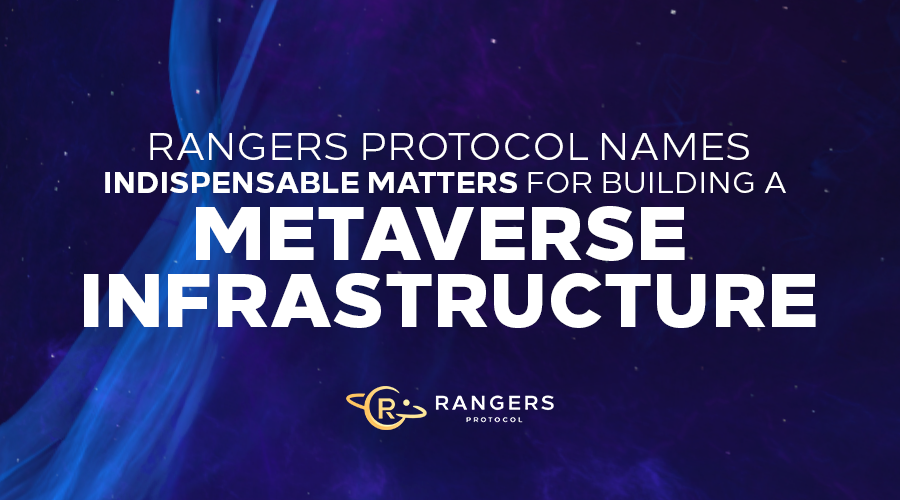The ultimate goal of Rangers Protocol is to become the infrastructure of the future Metaverse. To achieve this goal, needs related to NFTs and complex applications need to be addressed first. To solve these requirements and finally realize Metaverse requires multi-dimensional support. The Rangers Protocol team believes that the primary requirement for multi-dimensional support is a more suitable underlying infrastructure for Metaverse.

After MixMarvel's in-depth research on the industry and in-depth research on various projects, the team believes that other existing solutions in the market currently support relatively scattered support for NFT. They have indeed solved part of the problems, but they have not formed a complete, Unified solution. The complex application scenarios for NFT are more complicated than DeFi, and have higher requirements on the underlying layer. Rangers Protocol has predicted market demand and provided corresponding solutions, and is superior to other solutions on the market in terms of unity and completeness——Rangers Protocol starts from the underlying architecture and revolves around user experience and developers Experience and industry consensus to carry out infrastructure construction.
On the whole, the underlying framework of Rangers Protocol is divided into two parts: Rangers Connector and Rangers Engine.
Rangers Connector mainly solves the security cross-chain problem of FT and NFT. In the future, Rangers Protocol will cooperate with middleware partners to provide solutions such as comprehensive data analysis, on-chain push, and global data storage. What has been realized so far is the safe cross-chain of FT and NFT assets.
Rangers Engine is a high-performance chain that can better support complex applications. It includes the following aspects:
VRF+BLS consensus mechanism based on RPOS governance.
EVM-compatible virtual machine REVM. On the basis of being compatible with ERC-721, the database of NFT has been expanded, so that the data in different scenarios and different applications can be stored and completely preserved based on the chain. In addition, REVM also adds functional instruction sets, such as one-click release of a batch of NFTs, direct cross-chain at an instruction set level, etc.
Developer friendly IDE. It allows traditional developers entering the blockchain world to obtain a complete development tool chain. It has a Debug testing environment, debugging and trial running smart contracts. These smart contracts are not limited to Rangers Protocol, even smart contracts in Ethereum can be debugged in this environment.
The Rangers Protocol team believes that an excellent blockchain infrastructure requires not only a solid underlying architecture, but also upper-level experiences such as user-side experience, developer experience, and industry consensus.
The experience on the user side includes how web2.0 transitions to web3.0, how to protect users' personal assets during this process, how to describe personal assets with NFT, and how smooth it is for users to enter the blockchain world from the Internet world experience etc.
The experience on the developer side includes when developers build complex applications based on this infrastructure or in the metaverse, how should its performance be met, whether there is a complete tool chain to support it, etc.
Industry consensus refers to how assets in different scenarios are interoperable, how NFT protocols are unified, how NFTs are expressed, where they are stored, and how the price system is formulated.
In response to these problems, Rangers Protocol has begun to solve them. At present, Rangers Protocol has solved the basic performance support required by developers for complex application development, and how to save cross-chain data of NFT in different application scenarios. The problem that is trying to be solved is how the systematic price system of NFT is formed. In the next plan, Rangers Protocol will focus on solving the problem for users: what is the user's smooth experience in the process of entering the blockchain world from the Internet world; what to solve for developers is: at the IDE level In the above, after developers enter the blockchain world, how does Rangers Protocol create a complete tool chain to support developers in application development.
Rangers Protocol creates a complete multi-chain development environment for blockchain developers, providing development convenience. Existing Dapps in EVM-compatible blockchains can be migrated to Rangers Protocol with one click. After the migration is completed, thanks to the high performance and cross-chain features of Rangers Protocol, developers can provide users with services such as smoother user experience and asset cross-chain. New Dapp developers can develop more complex decentralized applications based on Rangers Protocol and enjoy various new features provided by Rangers Protocol.
In actual cases, Rangers Protocol can save more than 75% of the time of blockchain application developers to implement multi-chain versions, and at the same time provide good support for high-frequency, high-interaction applications, such as real-time battles in games, multiplayer Complex systems such as arenas and guild battles, as well as high-frequency and high-interaction applications such as trading, stores, auctions, and mission systems. Rangers Protocol allows users to obtain an Internet-like application experience while completely retaining the decentralized nature of the product.
Rangers Protocol (Chinese: Rangers Protocol) is a blockchain infrastructure for the future virtual world. It is fully compatible with Ethereum, professionally supports NFT and complex applications, and integrates and expands cross-chain protocols, NFT protocols, EVM protocols, and distributed network protocols.
Rangers Protocol (Chinese: Rangers Protocol) is a blockchain infrastructure for the future virtual world. It is fully compatible with Ethereum, professionally supports NFT and complex applications, and integrates and expands cross-chain protocols, NFT protocols, EVM protocols, and distributed network protocols.





